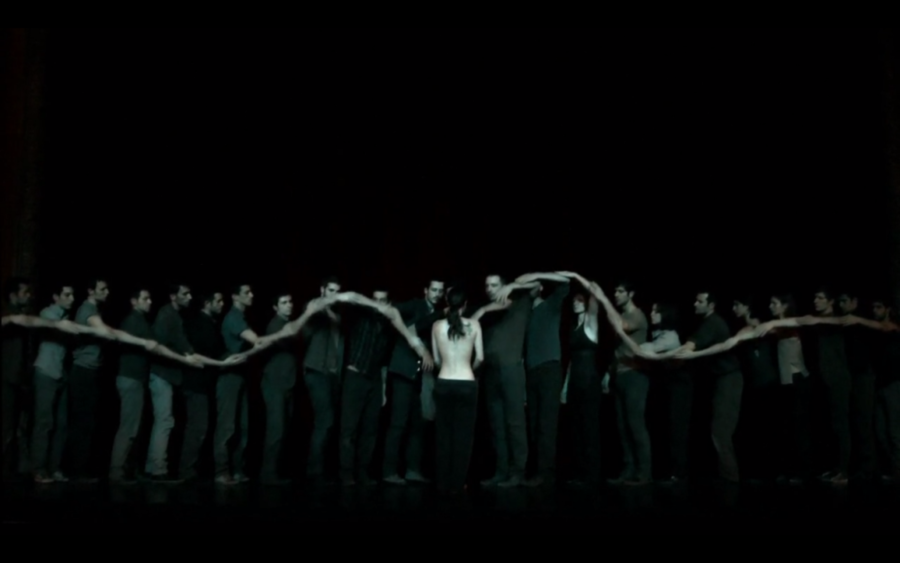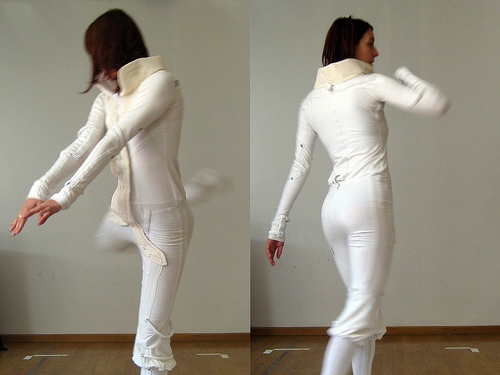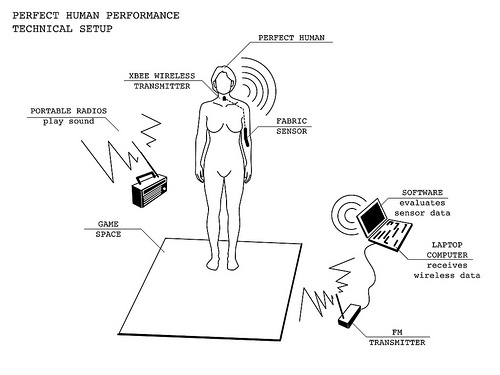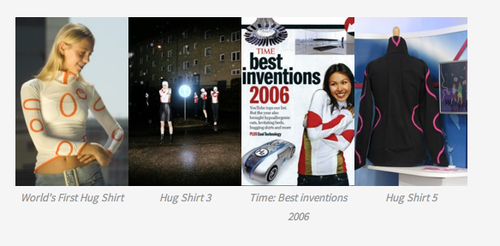Difference between revisions of "/inspiration"
| (4 intermediate revisions by the same user not shown) | |||
| Line 5: | Line 5: | ||
NOWHERE explores the nature of the theatrical stage itself, a spatial mechanism continually transformed and redefined by the human presence to denote any place, and yet designed to be a non-place. 26 performers measure and mark out the space using their bodies, pitting themselves against its dimensions and technical capabilities in a site-specific performance that can be presented nowhere else. | NOWHERE explores the nature of the theatrical stage itself, a spatial mechanism continually transformed and redefined by the human presence to denote any place, and yet designed to be a non-place. 26 performers measure and mark out the space using their bodies, pitting themselves against its dimensions and technical capabilities in a site-specific performance that can be presented nowhere else. | ||
| + | |||
| + | [[File:Bildschirmfoto-2014-11-10-um-16.13.29-1024x640.png | 1000px]] | ||
| + | |||
| Line 40: | Line 43: | ||
[[File:Schermafbeelding 2014-11-26 om 12.39.58.png | 500px]] | [[File:Schermafbeelding 2014-11-26 om 12.39.58.png | 500px]] | ||
| + | |||
| + | Groupe de Recherche d’Art Visuel (GRAV) (Research Art Group) was a collaborative artists group in Paris[1] that consisted of eleven opto-kinetic artists, like François Morellet, Julio Le Parc, Francisco Sobrino, Horacio Garcia Rossi, Yvaral, Joël Stein and Vera Molnár, who picked up on Victor Vasarely's concept that the sole artist was outdated and which, according to its 1963 manifesto, appealed to the direct participation of the public with an influence on its behavior, notably through the use of interactive labyrinths. | ||
| + | GRAV was active in Paris from 1960 to 1968.[2] Their main aim was to merge the individual identities of the members into a collective and individually anonymous activity linked to the scientific and technological disciplines based around collective events called Labyrinths. | ||
| + | Their ideals enticed them to investigate a wide spectrum of kinetic art and op art optical effects by using various types of artificial light and mechanical movement. In their first Labyrinth, held in 1963 at the Paris Biennale, they presented three years work based on optical and kinetic devices. Thereafter they discovered that their effort to engage the human eye had shifted their concerns towards those of spectator participation; a foreshadow of interactivity. | ||
| + | On April 19, 1966 GRAV created Une Journée dans la rue (Day in the Street) in Paris where they invited passing participants to involve themselves in various kinetic activities such as having them walk on uneven blocks of wood and/or experience a distorted world by wearing elaborate distorting spectacles. | ||
| + | Their agreed dissolution in November 1968 was based on their recognition that it was impossible to maintain the rigor of a joint program. | ||
| + | |||
| + | Chronophotography | ||
| + | |||
| + | Wikipedia defines chronophotography as “a set of photographs of a moving object, taken for the purpose of recording and exhibiting successive phases of motion.” The term chronophotography was coined by French physicist Étienne-Jules Marey to describe photographs of movement from which measurements and study of motion could be derived. It is derived from the Greek word “chronos” (time), combined with photography. Marey’s pioneering work in the field of chronophotography can be seen to have lead directly to the development of cinematography. | ||
| + | |||
| + | Paul St. George’s paper, Using chronophotography to replace Persistence of Vision as a theory for explaining how animation and cinema produce the illusion of continuous motion, published in Volume 4 of the Journal for Animation Studies, reconsiders chronophotography as seen from the position of the post-cinematic era –and as a corrective for the often mistaken idea that persistence of vision is responsible for the fusion of sequential images into the illusion of full motion. | ||
| + | |||
| + | As with Marcel Duchamp’s seminal painting Nude Descending a Staircase, No.2, Norman McLaren’s Pas de Deux was inspired by the chronophotography of Étienne-Jules Marey. McLaren’s studied use of the optical printer for creating dynamic temporal and spatial offsets can be seen to share similarities with the compositional devices later used by John Whitney Sr. and Larry Cuba in films such as Arabesque and Calculated Movements. Similar approaches to structuring and revealing image flow may also be seen in many contemporary real-time digital works. | ||
| + | |||
| + | Butch Rovan has this to say about his interactive installation, Let us imagine a straight line: | ||
| + | “Let us imagine a straight line is an interactive work about movement, the first installment in my ongoing project for dancer, video, music, and live electronics called Studies in Movement. I take these titles from two French thinkers of the late 19th century: physiologist Etienne-Jules Marey and philosopher Henri Bergson. Marey conceived the apparatus for the modern scientific study of movement. He invented instruments to measure human and animal locomotion—a beating heart, a bird in flight—and developed technologies that eventually led to the modern cinema. Bergson responded to these advances with a philosophy that rethought the relation between space and time, matter and memory, physical and psychical movement.” | ||
| + | |||
| + | Yet another chronophotography based installation based on a dancers path in space. Made by Humans (2012), installed in the Hyundai Vision Hall of the Hyundai Motors Corporation, is a collaborative work by the Universal Everything design group and The Creators Project. | ||
| + | |||
| + | Where Muybridge represented the successive stages of motion in individual frames, Marey captured them on a single photographic plate. In the late 1880s Marey undertook a photographic study of the flight of birds, which had until then defeated his technical ingenuity. | ||
| + | |||
| + | https://michaelscroggins.wordpress.com/fe417-motion-capture-for-artists/chronophotography/ | ||
| + | |||
| + | The graphic trace | ||
| + | |||
| + | From the mid-nineteenth century onwards, recording instruments became vital tools in the production of scientific knowledge in a range of disciplines that were of direct relevance to surrealism. Such mechanical apparatuses, synonymous with the values of precision and objectivity, quickly became the benchmark of an experimental method. The inexorable rise of the graphic method has been intensively studied by historians of science and visual culture, but surrealism has not yet been considered as partaking of this transformation in the field of visual representation. In what follows, recording instruments are shown to have helped to underwrite surrealism’s scientific aspects and bolster its credentials as an experimental avant-garde. | ||
| + | The graphic method inaugurated a novel paradigm of visual representation, one geared towards capturing dynamic phenomena in their essence. It was the product of a radically new scientific conception of the physical universe in terms of dynamic forces, a world view that is doubtless at some level a naturalisation of the energies, both destructive and creative, unleashed by industrial capitalism.5 The proliferation of mechanical inscription devices in the life sciences coincided with the displacement of anatomy, as a static principle of localisation, by physiology, which analysed and studied forces and functions. Étienne-Jules Marey, known today as an inventor of chronophotography, was one of the main exponents of the graphic method in France, and he personally devised a number of instruments whose aid, he wrote, made it possible to ‘penetrate the intimate functions of organs where life seems to translate itself by an incessant mobility’.6 As an apparatus for visualisation, the graphic method carries implications for how to construe figures of the visible and invisible. It was not simply a technology for making visible something that lay beneath the human perceptual threshold (like a microscope), but rather a technology for producing a visual analogue – a translation – of forces and phenomena that do not themselves belong to a visual order of things.7 | ||
| + | At its simplest, a frog’s leg muscle is hooked directly to a pointed stylus that rests on a drum whose surface is blackened with particles of soot from a candle flame (fig.2). An electrical stimulus causes the muscle to contract, deflecting the stylus and thus producing on the revolving drum a typical white on black curvilinear trace. Fatigue of the muscle produces an increased duration and diminished amplitude of successive contractions, as shown in the figure at the bottom. A more sophisticated device pictured by Marey consisted of a flexible diaphragm, a sort of primitive transducer, connected by a hollow rubber tube to a stylus, which inscribed onto a continuous strip of paper. At the heart of the graphic method is the production of a visible trace.8 A stylus roving back and forth on a rotating cylinder or a moving band of paper translates forces into a universal script that Marey regarded as ‘the language of the phenomena themselves’ and which he proclaimed is superior to the written word.9 In an era where quantitative data gradually became the common currency of scientific discourse, Marey considered written language, ‘born before science and not being made for it’, as inadequate to express ‘exact measures and well-defined relations’.10 The incorporation of a time axis owing to the continuous regular movement of the drum lends a distinctive property to the graphic trace. The historian Robert Brain remarks that ‘the graphic representation is not an object or field like that of linear perspective, but a spatial product of a temporal process, whose order is serial or syntagmatic’.11 Units of time are marked off at the bottom of the myographic trace as regular blips on a horizontal axis; additionally, the passage of time is registered in the palimpsest-like layering of successive traces.12 | ||
Latest revision as of 17:56, 17 January 2015
INSPIRATION:
Amazing dance!!!
NOWHERE explores the nature of the theatrical stage itself, a spatial mechanism continually transformed and redefined by the human presence to denote any place, and yet designed to be a non-place. 26 performers measure and mark out the space using their bodies, pitting themselves against its dimensions and technical capabilities in a site-specific performance that can be presented nowhere else.
PERFECT HUMAN 2008 Inspired by Joergen Leth’s 1967 short film “The Perfect Human” and Lars von Trier’s “The Five Obstructions” (2003). This performance intends to create a sixth obstruction of The Perfect Human, by introducing rules in order to complete the performance as a game.
In preparation for the game the performer receives a suitcase, one week in advance. The artists do not meet or talk with the performer until the day of the performance. The Suitcase contains items selected to help the performer prepare herself for the game. None of the items impose any obligation on the performer. Instead she is free to inspect and make use of them in any way she sees fit. But she must prepare herself. On the day of the performance, the performer must show up at the named time and location carrying the suitcase with all its contents. The game begins as the performer starts putting on the socks, the last item of the costume.
During the performance the performer reaches a point in the game, where she must mirror the audience in order to complete the level. This allows the audience to explore the wearable motion-capture system through the mirroring of movement. Moreover the audience must themselves become involved in order to perform the role of the perfect human
Technical The actual performance takes place in public space. The setup is fully portable by the artists and performer. The performer wears a handmade motion-capture costume that includes fabric bend sensors for tracking the motion of the limbs and wireless communication to send the sensor data from the suit to a nearby laptop. Software on the laptop analyzes the sensor data and triggers words from The Perfect Human text. An FM radio transmitter broadcasts these words to surrounding radios, which are tuned to the frequency of the FM transmitter. The radios play back the sound for everybody to hear.
The Hug Shirt!
Is a shirt that makes people send hugs over distance!
The HugShirt was invented by Francesca Rosella and Ryan Genz the co-founders of CuteCircuit, the London based award-winning design company.
The Hug Shirt Embedded in the shirt there are sensors that feel the strength of the touch, the skin warmth and the heartbeat rate of the sender and actuators that recreate the sensation of touch, warmth and emotion of the hug to the shirt of the distant loved one.
The Hug Shirt™ has been awarded as one of the Best Inventions of the Year by Time Magazine.
The Hug Shirt™ is a Bluetooth accessory for Java enabled mobile phones. Hug Shirt™s don’t have any assigned phone number, all the data goes from the sensors Bluetooth to your mobile.
phone and your mobile phone delivers the hug data to your friend’s phone and it is seamlessly transmitted Bluetooth to his or her shirt!Sending hugs is as easy as sending an SMS and you will be able to send hugs while you are on the move, in the same way and to the same places you are able to make phone calls (Rome to Tokyo, New York to Paris).
The Hug Shirt in Brazil The system is very simple: a Hug Shirt™ (Bluetooth with sensors and actuators), a Bluetooth java enabled mobile phone with the HugMe™ java software running (it understands what the sensors are communicating), and on the other side another phone and another shirt. If you do not have a Hug Shirt™ but know that your friend has one you can still send them a hug creating it with the HugMe™ software and it will be delivered to your friend’s Hug Shirt.
Groupe de Recherche d’Art Visuel (GRAV) (Research Art Group) was a collaborative artists group in Paris[1] that consisted of eleven opto-kinetic artists, like François Morellet, Julio Le Parc, Francisco Sobrino, Horacio Garcia Rossi, Yvaral, Joël Stein and Vera Molnár, who picked up on Victor Vasarely's concept that the sole artist was outdated and which, according to its 1963 manifesto, appealed to the direct participation of the public with an influence on its behavior, notably through the use of interactive labyrinths. GRAV was active in Paris from 1960 to 1968.[2] Their main aim was to merge the individual identities of the members into a collective and individually anonymous activity linked to the scientific and technological disciplines based around collective events called Labyrinths. Their ideals enticed them to investigate a wide spectrum of kinetic art and op art optical effects by using various types of artificial light and mechanical movement. In their first Labyrinth, held in 1963 at the Paris Biennale, they presented three years work based on optical and kinetic devices. Thereafter they discovered that their effort to engage the human eye had shifted their concerns towards those of spectator participation; a foreshadow of interactivity. On April 19, 1966 GRAV created Une Journée dans la rue (Day in the Street) in Paris where they invited passing participants to involve themselves in various kinetic activities such as having them walk on uneven blocks of wood and/or experience a distorted world by wearing elaborate distorting spectacles. Their agreed dissolution in November 1968 was based on their recognition that it was impossible to maintain the rigor of a joint program.
Chronophotography
Wikipedia defines chronophotography as “a set of photographs of a moving object, taken for the purpose of recording and exhibiting successive phases of motion.” The term chronophotography was coined by French physicist Étienne-Jules Marey to describe photographs of movement from which measurements and study of motion could be derived. It is derived from the Greek word “chronos” (time), combined with photography. Marey’s pioneering work in the field of chronophotography can be seen to have lead directly to the development of cinematography.
Paul St. George’s paper, Using chronophotography to replace Persistence of Vision as a theory for explaining how animation and cinema produce the illusion of continuous motion, published in Volume 4 of the Journal for Animation Studies, reconsiders chronophotography as seen from the position of the post-cinematic era –and as a corrective for the often mistaken idea that persistence of vision is responsible for the fusion of sequential images into the illusion of full motion.
As with Marcel Duchamp’s seminal painting Nude Descending a Staircase, No.2, Norman McLaren’s Pas de Deux was inspired by the chronophotography of Étienne-Jules Marey. McLaren’s studied use of the optical printer for creating dynamic temporal and spatial offsets can be seen to share similarities with the compositional devices later used by John Whitney Sr. and Larry Cuba in films such as Arabesque and Calculated Movements. Similar approaches to structuring and revealing image flow may also be seen in many contemporary real-time digital works.
Butch Rovan has this to say about his interactive installation, Let us imagine a straight line: “Let us imagine a straight line is an interactive work about movement, the first installment in my ongoing project for dancer, video, music, and live electronics called Studies in Movement. I take these titles from two French thinkers of the late 19th century: physiologist Etienne-Jules Marey and philosopher Henri Bergson. Marey conceived the apparatus for the modern scientific study of movement. He invented instruments to measure human and animal locomotion—a beating heart, a bird in flight—and developed technologies that eventually led to the modern cinema. Bergson responded to these advances with a philosophy that rethought the relation between space and time, matter and memory, physical and psychical movement.”
Yet another chronophotography based installation based on a dancers path in space. Made by Humans (2012), installed in the Hyundai Vision Hall of the Hyundai Motors Corporation, is a collaborative work by the Universal Everything design group and The Creators Project.
Where Muybridge represented the successive stages of motion in individual frames, Marey captured them on a single photographic plate. In the late 1880s Marey undertook a photographic study of the flight of birds, which had until then defeated his technical ingenuity.
https://michaelscroggins.wordpress.com/fe417-motion-capture-for-artists/chronophotography/
The graphic trace
From the mid-nineteenth century onwards, recording instruments became vital tools in the production of scientific knowledge in a range of disciplines that were of direct relevance to surrealism. Such mechanical apparatuses, synonymous with the values of precision and objectivity, quickly became the benchmark of an experimental method. The inexorable rise of the graphic method has been intensively studied by historians of science and visual culture, but surrealism has not yet been considered as partaking of this transformation in the field of visual representation. In what follows, recording instruments are shown to have helped to underwrite surrealism’s scientific aspects and bolster its credentials as an experimental avant-garde. The graphic method inaugurated a novel paradigm of visual representation, one geared towards capturing dynamic phenomena in their essence. It was the product of a radically new scientific conception of the physical universe in terms of dynamic forces, a world view that is doubtless at some level a naturalisation of the energies, both destructive and creative, unleashed by industrial capitalism.5 The proliferation of mechanical inscription devices in the life sciences coincided with the displacement of anatomy, as a static principle of localisation, by physiology, which analysed and studied forces and functions. Étienne-Jules Marey, known today as an inventor of chronophotography, was one of the main exponents of the graphic method in France, and he personally devised a number of instruments whose aid, he wrote, made it possible to ‘penetrate the intimate functions of organs where life seems to translate itself by an incessant mobility’.6 As an apparatus for visualisation, the graphic method carries implications for how to construe figures of the visible and invisible. It was not simply a technology for making visible something that lay beneath the human perceptual threshold (like a microscope), but rather a technology for producing a visual analogue – a translation – of forces and phenomena that do not themselves belong to a visual order of things.7 At its simplest, a frog’s leg muscle is hooked directly to a pointed stylus that rests on a drum whose surface is blackened with particles of soot from a candle flame (fig.2). An electrical stimulus causes the muscle to contract, deflecting the stylus and thus producing on the revolving drum a typical white on black curvilinear trace. Fatigue of the muscle produces an increased duration and diminished amplitude of successive contractions, as shown in the figure at the bottom. A more sophisticated device pictured by Marey consisted of a flexible diaphragm, a sort of primitive transducer, connected by a hollow rubber tube to a stylus, which inscribed onto a continuous strip of paper. At the heart of the graphic method is the production of a visible trace.8 A stylus roving back and forth on a rotating cylinder or a moving band of paper translates forces into a universal script that Marey regarded as ‘the language of the phenomena themselves’ and which he proclaimed is superior to the written word.9 In an era where quantitative data gradually became the common currency of scientific discourse, Marey considered written language, ‘born before science and not being made for it’, as inadequate to express ‘exact measures and well-defined relations’.10 The incorporation of a time axis owing to the continuous regular movement of the drum lends a distinctive property to the graphic trace. The historian Robert Brain remarks that ‘the graphic representation is not an object or field like that of linear perspective, but a spatial product of a temporal process, whose order is serial or syntagmatic’.11 Units of time are marked off at the bottom of the myographic trace as regular blips on a horizontal axis; additionally, the passage of time is registered in the palimpsest-like layering of successive traces.12



